Synopsis: Self-generated, unsubstantiated, and exaggerated claims tarnish higher education’s image.
This is a personal story as much as anything–not just a story about collegiate branding–so bear with me as I frame this essay in personal terms. That approach helps me make sense of what I’ve experienced over the years. I hope the personal touch will bring life to issues.
My story beings in the early 1980’s as a young, assistant professor (tenure track) at a major state university. I taught grad students, conducted research, and did a lot of outreach–mostly with students–connecting what they were learning in the classroom to what I was researching.
The cornerstone of my work was a two-semester graduate course on the theory and practice of community development. Because so many students were interested in pursuing public/nonprofit careers, I always made sure to include course topics associated with organization management and leadership. One topic was social marketing, a relatively new concept back then.
I was interested in helping students think through how they might market a nonprofit or public sector organization–just as they might do if they worked for a business. Social marketing had broader applicability, too: How might students introduce an idea or service to the public in a constructive, successful way?
I watched the concept of social marketing catch on nationally. I was pleased to see it adopted by many colleges and universities and I included collegiate examples in the course.
Here’s an example from the University of Oregon (1990), entitled, “World Class.” The TV commercial is interesting in that it takes a monolithic approach: the entire spot focuses on Oregon’s national rankings.
Providing external evidence to support organizational claims is an important–and classic–characteristic of brand marketing. As an example, let’s flash forward to 2016, 25+ years after the UO spot aired. Let’s look at an advertisement that many of you have likely seen on TV. It’s a General Motors’ spot about how several cars in its product line topped the J.D. Powers’ evaluation of initial quality. Note how GM adds a dimension of customer interaction in the spot–and secures customer affirmation, too–in response to its Powers-based assessment of product quality.
GM’s approach is counter-opposite to the deception perpetrated by Volkswagen in conjunction with its “Green Diesel scam.” The lie–that VW diesels outperformed other brands because of superior engineering–was foisted on the public because the company had figured out a way to deceive a test used by U.S. EPA to evaluate fuel mileage (done in a lab setting). The scan was uncovered by West Virginia University faculty and students who did mileage tests under road conditions.
So you can see why I like the Oregon and GM spots. Each is a straightforward, grounded presentation regarding product quality. You might quibble with sources of evidence (I actually do, in both cases), but both ads get high marks on truth-telling.
The same can be said for another, yet different, approach. There isn’t an external data source to verify claims made in this video, but I like the way serving the public good is this organization’s center of gravity. The example is from St. Martin’s University of Lacey, Washington.
Note the strong emphasis on how the school serves students. A point of pride is the amount of money being set aside for undergraduate scholarships. It’s also interesting–and reinforcing for anyone who values the social impact of higher ed–regarding how St. Martin’s views funding for scholarships as an investment in society (the commonwealth) as a whole.
If everything in collegiate marketing/branding today was like the UO and SMU spots, I wouldn’t be writing this essay. Having said that, when you finish reading this essay you may conclude that it’s “much ado about nothing.” What’s the big deal about campus branding, a seemingly trivial matter?
It’s because I don’t see it as trivial, although I actually once did. Today I see it as a window into the way institutions think about themselves and how they want the public to view them. In some cases it reveals an underbelly, showing what higher education in America has become in some corners: self-absorbed, arrogant.
The issues I’ll describe in this essay evolved over time. Things began to change at least three decades ago…perhaps as long as a half-century ago. I began noticing changes as early as the mid-80’s; and, by the early ’90’s, it was clear to me the landscape had changed dramatically. By that time I had supplemented academic roles with administrative assignments. I had a bird’s-eye view of how a university was being run.
At the beginning I didn’t know what to call this change. Let’s simply call it “it.” I just knew something was different. Early on I figured it was just me, that perhaps I was misreading the environment.
Humanist Alice Dreger well describes what I did next: “Sometimes the best you can do–the most you can do–is point to the sky, turn to the guy next to you, and ask, “Are you seeing what I’m seeing?” (italics added)
The answer was “Yes!”
To give you a handle on the dynamics on this metamorphosis. I’ll start by describing the way things were prior to “it”
The approach I’ve always taken (and taught) is that public and non-profit organizations–higher education included–are first and foremost social institutions, founded to serve the public good. But these organizations also need to be run like a business.
I’ve always believed that the most successful organizations are strongly committed to mission, have a public-serving vision, and have in place a strong set of business structures/processes. These twin characteristics–social institution and business operations–need to be in balance.
But make no mistake about it: back then I experienced many public and non-profit organizations that were not in balance. The pattern was almost always the same: organizations strongly committed to their public mission had fundraising issues, personnel problems, executive director challenges, and/or other things of that sort–the stuff that formal organizations often encounter in business operations.
The same dynamic challenged higher education. Over the years I worked with many administrators who, although quite accomplished in the respective fields, weren’t as adept at leading and managing departments, colleges, or universities. They seemed to be afflicted by “The Peter Principle,” that is, promoted to the level of their incompetence.
Here’s the thing, though: I was accustomed to dealing with what I’ve just described–and the issues associated with it–because I accepted it as part-and-parcel of public and nonprofit life. It was “the paradigm.”
But in the 90’s (at least as I perceived it back then) the paradigm shifted. It flipped, actually. Business operations now got top billing and the social institution side of the organization got the shorter end of the stick.
There was still imbalance, just a different type of imbalance–one that wasn’t easy for me to either accept or accommodate.
The metrics spoke to the shift. The most valued metrics were about money, efficiency, and competitive standing. Certain functions became privileged–those that enabled a school to compete successfully with peers.
A wave of new administrators spoke to the shift. We called them “Bean Counters.” Always there, but mostly in staff positions, Bean Counters now were everywhere, including in significant line positions. They were department chairs, deans, provosts, and presidents. They had power.
You couldn’t laugh anymore.
For me it was a profoundly head-shaking experience. I was convinced the shift would be problematic.
Social institutions aren’t businesses. They need to be run like ones. The cornerstone of public and nonprofit life is the way that values, mission, and vision interconnect to serve the public good.
Nothing good comes–and a lot of bad can happen–when business operations become preeminent.
One might argue that “forces” compelled the paradigm shift. Public funding declines. Greater competition. More public scrutiny. Calls for accountability. All of those things are true and the literature and press is replete with renditions of all-of-the-above.
But this change was also willed. The administrators who came through the door–and the boards who let them in–were highly skillful in this “new way.” They relished taking change, shifting things around, much like we’re seeing today in Washington DC.
What I experienced back then was a paradigmatic change with ideological moorings. The philosophy was different. Was of valuing were different. It wasn’t the way I had come to know–what mentors had modeled and taught me. There were different answers to what to be a university and what a college education is for.
It took me a number of years of thinking, reading, discussing, reflecting, and writing to come to the conclusions I’ve just shared. Why? Nobody was shouting the change from the mountaintop. It was more like a creep. That was an insidious feature of “it”: this shift just crept up and over time took hold.
By the mid-2000’s I discovered that my new experience had a name. It had a name long before I discovered it. It was Neoliberalism. Business operations reign supreme. Markets are king. Success is measured by individuals and organizations winning–using market terms, in market share, and by beating the competition.
Sounds like the financial industry, doesn’t it? But, now, this way of thinking permeated all industries–public and nonprofit included, including higher education.
As Neoliberalism’s grasp of higher education got stronger, many aspects of this venerable institution become unrecognizable to me. And it wasn’t just higher education. I saw the same thing happen in the nonprofit sector. It was a stunning–and I must admit–a scary reversal.
I don’t know how to put it other than this way: Soul was eroding in exchange for success in business terms.
That observation brings me back to why I’m writing about college branding. So many of the changes I observed were changes that were happening behind closed doors. They happened without announcement and fanfare. Because change came slowly, imperceptibly, over time it was difficult “seeing” many of the changes. You really had to be vigilant and pay attention.
The result? Much of what happened seemed “normal” to most people, both inside and outside the Academy.
Examples include seeing students as customers. The significant rise in the number of part-time (and not tenure-stream) faculty members. The employment of large numbers of administrative staff to support administrators and institution-centered functions. The recruitment of non-academic executives to serve as university presidents. Devaluing the humanities and social sciences as “impractical.” The enormous amount of money (including internal funds) pumped into intercollegiate (pro-like) athletics.
What did it all add up to? William Deresiwicz puts it well: “Neoliberalism is an ideology that reduces all values to money values. The worth of a thing is the price of the thing. The worth of a person is the wealth of the person. Neoliberalism tells you that you are valuable exclusively in terms of your activity in the marketplace — in Wordsworth’s phrase, your getting and spending. The purpose of education in a neoliberal age is to produce producers.”
The best example I’ve come across of basing higher education on neoliberal urges is Florida Atlantic University’s tagline: Unbridled Ambition. “Unbridled Ambition is the engine that drives the American dream,” says FAU. But the same label might be uttered by a judge when sentencing a Wall Street financier gone bad.
Examples like this get colleagues talking. The conclusion is always the same: “This stuff couldn’t have possibly happened years ago.” Today, though, it flies beneath the radar. It’s why I (for one) really feel for newer colleagues. “Now” is all they know. It’s “normal,” their reality context. There’s very little push back. Of course there are exceptions, especially among younger colleagues who study higher education and its evolution (see, for example, Cantwell and Kauppinen), co-editors, Academic Capitalism in the Age of Globalization).
But, for many others, Dreger’s provocative question doesn’t always provoke.
Me: “Do you see what I see?”
They: “See what?”
But it’s awfully tough to keep a secret. One way the secret got out was (and still is) through campus branding campaigns.
How did that happen? I don’t think those who’ve designed and authorized insidious branding campaigns realize the stench they’ve created. They actually built a window for us to peer through–much like what happens when any of us creates a Facebook or Twitter page: it’s there for the world to see.
But here’s the thing: there are endless branding options to pursue: what to say, how to say it, and what image to portray. With all of those options, it’s mystifying–and troubling–why certain options are pursued.
So I started paying attention to branding campaigns. I didn’t go to the fridge during halftime of football and basketball games: I wanted to watch the TV spots, to see what schools were saying about themselves. I Googled videos made by schools about schools. I examined print materials and brochures.
Some of the claims made were head-turning experiences. So I started looking for evidence–outside-of-the-university sources–to verify what was being said.
For example, Middle Tennessee State University calls it’s University Honors College a learning experience that rivals what students often receive at private liberal arts colleges. Perhaps a stretch at first blush I found evidence to support the claim. I was impressed with what I learned, too.
But then I came across another university claim: MTSU’s Honors College “offers an ivy-league experience.” To the University’s credit I was able to locate a number of independent sources that indeed touted the Honors College. But yet another claim turned my head: “recognized recently by the Chronicle of Higher Education for producing Fulbright Scholars, placing it alongside universities such as Duke, Harvard, and Yale.”
I checked the cited source and then, went to the primary source. See if you can find evidence supporting the claim. I could not.
That’s just one example of what I found. I was surprised by what I learned and I was shocked by what I learned. The latter response definitely applies to what I’ll label “the bizarre case of Oklahoma State University.”
Watch this TV spot carefully. It’s entitled, “Are You a Cowboy?”
Perhaps the first thing you’ll notice is the artful way the spot is produced. It’s beautifully done in Madison Avenue style. But look beyond the flash. Note the concept of “The Code.” There’s a list of attributes that characterize what it means to be an OSU affiliate. The university president appears at the end, exclaiming “We are Cowboys!”
Ask yourself this question: Can this possibly be true? Is there really a code of conduct that applies to the tens of thousands of people associated with this school? Is there a penalty for violating one or more of these planks? Are students screened for admission/faculty screened for jobs using The Code?
You know the answers. It’s a marketing ploy.
Oklahoma State University has a problem that’s endemic in higher education. Professor Ann Larabee calls it “the Coke vs. Pepsi problem,” that is, to differentiate generally undifferentiated products. How does a school “stick out” and distinguish itself from the sea of other schools that do pretty much the same things?
If OSU is Coke, the the University of Oklahoma is Pepsi. Watch this recent OU video and note what’s being said. Note the references to academic quality and source-data to support what’s said.
The brand-name schools–Harvard, Duke, Stanford, and the like–don’t have a serious case of “the Coke vs. Pepsi problem.” Demand is high and consistent at those institutions, and each has created at least one value-stream to distinguish themselves.
For everybody else it’s a different story. And that’s precisely what’s driving branding mania.
A ‘craze’ it is and ‘crazy’ is what it has become. ‘Foolish’ is anyone who takes claims at face value. As the cover picture to this essay implores: DEMAND EVIDENCE, THINK CRITICALLY.
Perhaps the most telling thing about the OSU spot is how silent it is regarding academic quality–the cornerstone of any school. Rather, OSU focuses on personality traits and behavioral preferences.
With more digging I found an OSU a website that includes a questionnaire. I was stunned to discover what was being asked. Here’s an example question:
Your phone carrier charges you too much for your monthly bill. You… (choose one):
a) Calmly bring it to their attention and ask for it to be corrected
b) Give them a lesson on good and bad business practices
c) Make your frustration clear and demand they fix the issue and give you a free month for your trouble.
I took “the test,” selecting answers at random, and was informed I came up short.

Portland State “Fearless” Is is true? Or is it an institutional aspiration, how PSU wants to be known? (photo, Glow Creative)
Let’s shift the spotlight and look at another example from another school.
FEARLESS is Portland State University’s brand. It’s an image that connotes courage and perseverance. Because fearlessness can’t possibly be distributed across the population, PSU’s affiliates must be extra-ordinary. Right?
But here’s the thing: Is it real? Perhaps some PSU’ers are fearless–whatever that means. But it’s more likely that “Fearless” is an image for which the university wants to be known.
Using academic jargon, it’s “aspirational.” Perhaps, over time, there will be many stories of PSU fearlessness (PSU is actually gathering stories, see the panel above). Then, FEARLESS will be true at PSU, I guess.
But there’s something else about PSU’s branding effort that bears comment. It’s about making claims about a school that can’t possibly apply just to that school. In truth, the claims apply to many schools.
Watch this PSU TV spot carefully. Note every claim. (I counted over fifteen.) Then ask: Doesn’t each claim apply generally? How could any of these claims apply just to PSU? Well, of course they don’t!
Worse yet, there’s matter of connectedness, that is, how well the claims align with the brand, “Fearless” (the claim made at the end of the spot)? Well, they don’t.
The key word here (and in all branding campaigns) is claim. A claim is a truth-assertion, a statement of presumed truth about somebody or something. Some claims are inarguable facts, that is, assertions that can be confirmed through at least one authentic and verifiable source. An example: “I earned x dollars last year.” (You can check my tax returns.)
Other claims are interpretive. They require more digging to verify. Here’s an example: “Stanford is America’s top university.” What about Harvard? Well, it’s entirely possible to marshal different data sources and end up with different answers–Stanford is best or Harvard is best.
Because claims aren’t always easy to verify–and some resist verification altogether–claim communicators know that a battle can be won (sometimes the war) by simply making a claim and getting it in the public domain.
It amazes me just how many people believe a claim, especially when it comes from an authoritative, credible, and/or valued source. (Hint: a college or university source typically hits all three buttons).
A recent example of believing something that can’t possibly be true is when President Trump claimed “massive voter fraud” in the 2016 Presidential Election. There’s no evidence of that, but that “fact” doesn’t seem to matter to some people.
The bottom line is that we live in an era where you can’t trust what you’re told–even when it comes from presumably trusted sources.
Of course, some claims are true. Other claims aren’t. And as Princeton philosophy professor emeritus Harry Frankfurt puts it: some are bullshit.
Frankfurt believes B.S. is more dangerous than lies because B.S. just might be true. Furthermore–and the Trump example is a good one–some message receivers want a claim to be true, whether or not it is.
Unfortunately, this dynamic has become pronounced and pervasive–an everyday topic in American today (e.g., “alternative facts“). But the underlying dynamic certainly isn’t new. Consider President John F. Kennedy’s commentary from a half-century ago: “The great enemy of the truth is very often not the lie…. We subject all facts to a prefabricated set of interpretations. We enjoy the comfort of opinion without the discomfort of thought.” Commencement address, Yale University, June 11 1962 (italics added)
Collegiate branding thrives in this environment. How so? Just get claims out there! There will always be those–“our people’–who’ll support what we say, share what we say, take pride in what we say. It’s Alma Mater, after all.
The danger comes when a school is the sole source of claims. That’s when claims are self-initiated, self-referential, and without evidence to verify truthfulness. No matter, though, the intent is always the same. Present yourself in a very favorable light so that you can…. Attract students. Retain students. Make alumni proud. Encourage donations. Get the name of your school “out there.” Show that you’re good, if not best. Expand your following.
Think about all of this as you view videos from three major universities, all in the Big Ten–Indiana, Michigan, and Wisconsin.
Note the title of each video. Then pay attention to the claims being made. Are they true?
Indiana University, “Fulfilling the Promise.”
University of Michigan, “Always Leading, Forever Valiant.”
University of Wisconsin, Madison. “Proud, Strong, Prepared.”
IU’s approach is grounded in “promises.” The challenge, of course, is that it’s literally impossible to deliver on such a sweeping set of intentions. Do all faculty members “inspire students”? Of course they don’t. Will all graduates experience of “lifetime of success”? Sadly, no … and, even if they do, is IU the primary reason? Well, the “promises” IU makes can’t be promises in a literal sense. “Promises” seem to be a metaphor for institutional intentionality.
The Michigan spot is an attention-grabber for an entirely different–and perhaps surprising–reason: voice inflection. It shows that images and messages aren’t the only way to communicate effectively. The voices in Michigan’s presentation–both male and female–are strong, declarative, and emphatic. Note the alternating voices at the repetitive end: “MICHIGAN!” “MICHIGAN!” “MICHIGAN!” Consider, too, the school’s use of well-known public figures, like John Kennedy and Nelson Mandela, to accentuate what’s being said about U of M. Birds of a feather….
The UW-Madison example is a good one because it shows, among other things, just how difficult it is to make a memorable presentation without the use of questionable claims. The UW video is drab in comparison to the other two Big Ten spots. I like it, though, mostly because it stays (in my words) “bounded.”
No matter the school, though, it’s always a matter of who’s viewing these spots. Take the Michigan video. If you’re a Michigan student, alumnus, fan, or admirer it’s likely to elicit pride. And why not? You’re “in the fold.”
Amanda Taub calls a potential reaction like that partisan tribalism. But tribalism comes with a price. It “makes people more inclined to believe stories that justify their pre-existing partisan biases, whether or not they are true.”
That bias means partisans are likely to internalize positive news as a means to confirm beliefs/strengthen affiliation. Just the opposite happens with bad news: partisans often try to explain away negatives. It’s minor, idiosyncratic, ephemeral, or “nothing” when compared to transgressions elsewhere. To think or act otherwise is to tempt the ire of other partisans, to be disloyal to Alma Mater.
What about people who aren’t partisans? I’ll bet for every Michigan affiliate who takes pride in the video we just saw there’s at least one non-affiliate who sees it as an example of elitist arrogance. MICHIGAN! Really?
Tending satisfactorily to both audiences–partisans and others–represents a delicate balance in branding campaigns. It makes branding not unlike engaging in a political campaign. You need to excite and galvanize your base and attract newcomers to expand the tent. Expanding the tent means new students, new dollars, and the list goes on and on.
How might you exact such a delicate transaction? There are many ways, actually. One way is to accentuating the value of affiliating with an institution. For example, research shows that having winning athletic teams is an avenue to attracting students and donors. That’s why so much money is being invested in intercollegiate athletics these days, Many schools are either resurrecting or starting football programs.
Another strategy is to emphasize a school’s heritage. Here’s an example from Fordham University. Note the closing slide–The Jesuit University (bold added) of New York. Jesuit-affiliated schools are perceived by many to be in the top echelon of Catholic-affiliated higher education.
The same can be said for schools with other heritage connections as, say, Historically Black Colleges and Universities (HBCU’s) and as Land Grant institutions. Consider these highly communicative spots produced by Howard University (HBCU) and The University of Florida (land grant).






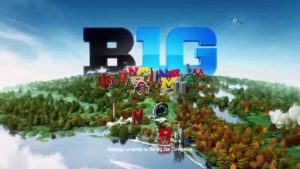






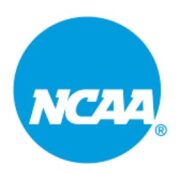
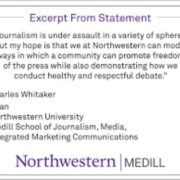
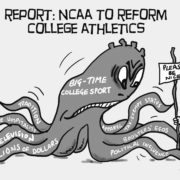
This website was… how do I say it? Relevant!! Finally I’ve found something which helped me.
Thank you!